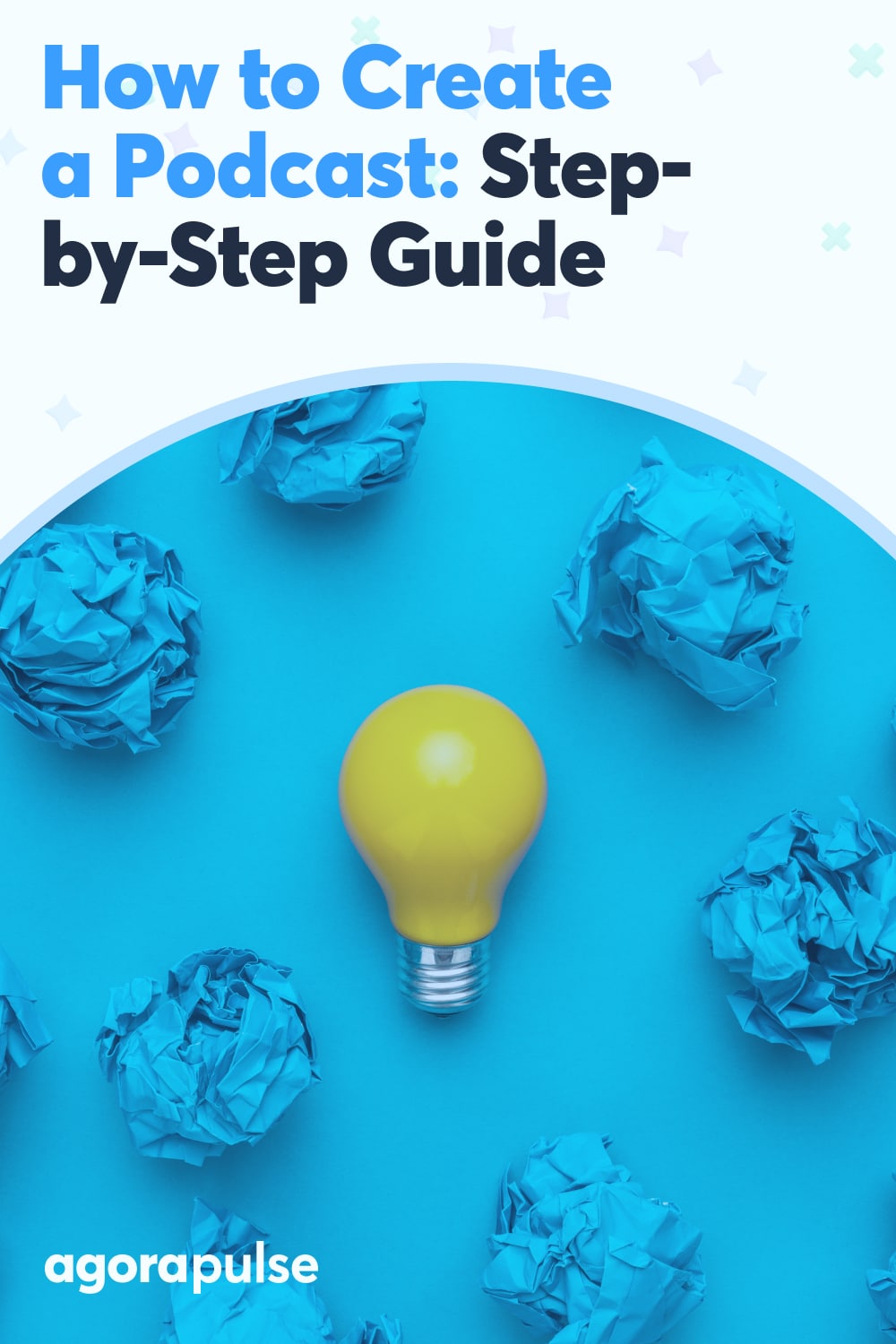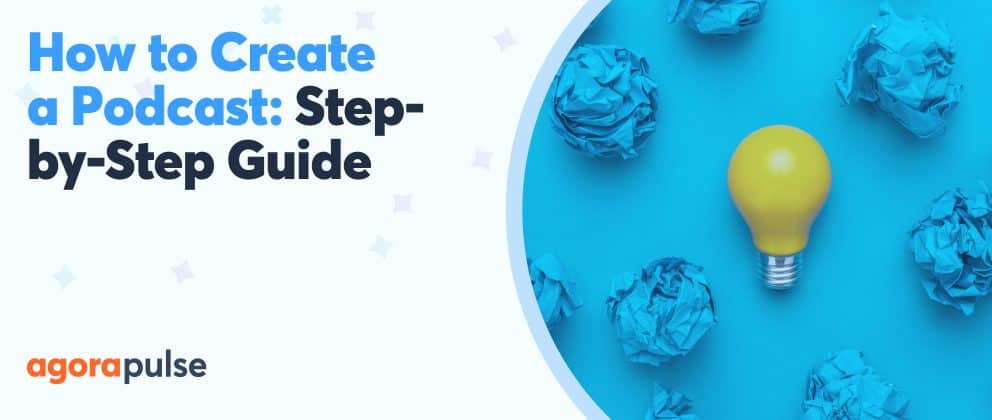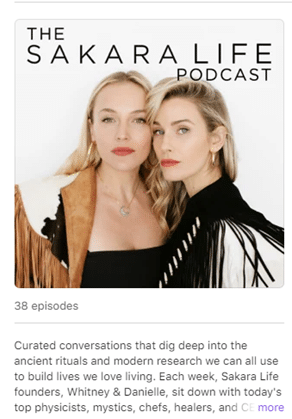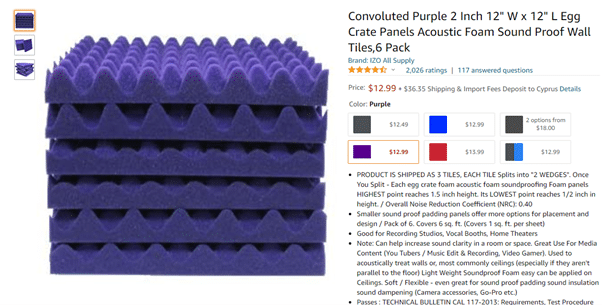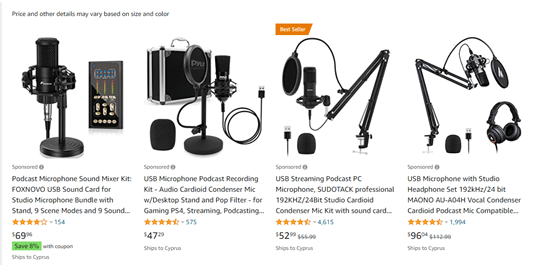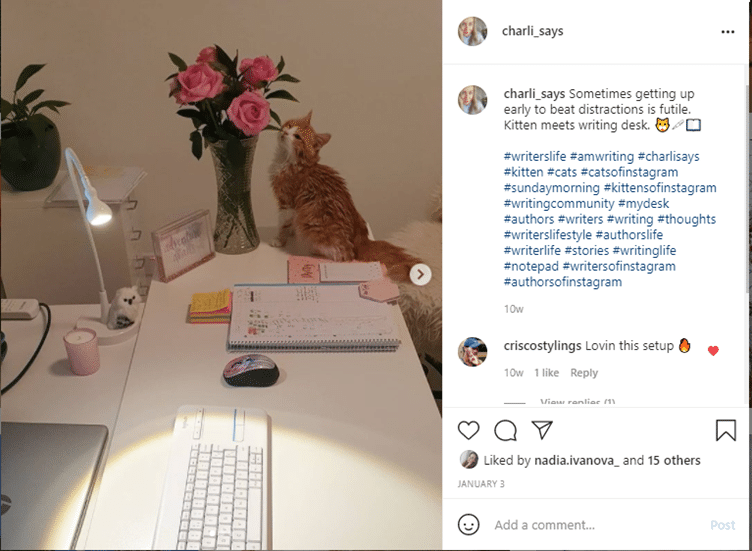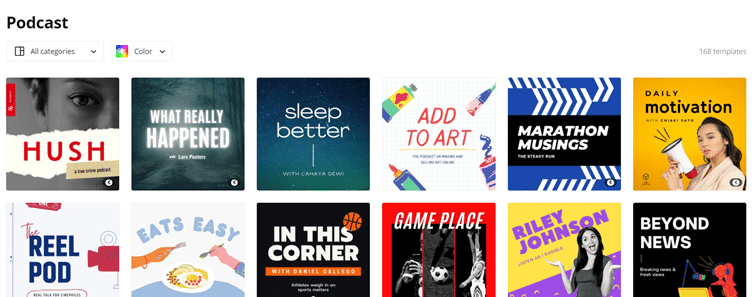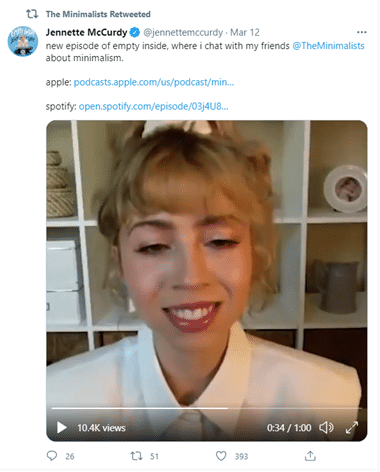hbspt.forms.create({
region: “na1”,
portalId: “8477337”,
formId: “b2b6f8ef-9f85-4b8f-ac2a-f510b34a3c46”,
version: “V2_PRERELEASE”
});
Start planning, crafting, publishing, and refining your podcast today. Here’s everything you need to know about how to create a podcast.
You’ve probably heard podcasts mentioned a lot lately. You’re not imagining it. There are currently 850,000 active podcasts and over 30 million podcast episodes.
Digital experts say podcasts will go from a 24% share of the total digital audio ad spend in 2021 to 29% by 2024. It’s a growing market and one that many brands are keen to tap into.
But how? Do you need a recording studio? A website? How much does it cost and what about hosting?
In this article, we will look at how to create a podcast.
1. Plan Your Podcast
As director of Contentworks Agency I’m big on content planning. Whether it’s a blog series, social media campaign, or podcast, you need to have a plan and at least some basic KPIs on what you want to achieve.
You also need to know when to skip this idea if something doesn’t fit with your strategy.
Choose Key Performance Indicators
KPIs will be unique to you and your brand, but they help to keep you on track and focused. They also help you address the key question: “Do I need a podcast?”
Examples include:
- More web traffic
- Elevation of a thought leader’s profile
- Increased signups
- Additional product sales
- Better brand awareness
- Increased social media engagement
Add value
The most popular podcasts are ones that add value. Whether it’s giving tips on budgeting, research, and financial advice for women like Jean Chatzky
Or it can be sharing healthy meal, medicine, and wellbeing tips over at The Sakara Life Podcast. Your podcast must add value.
“Don’t be afraid to start a show in an area where others are already established. If you can do something similar to what someone else is already doing but with your own unique spin, go for it!” (Erik Fisher, host of “Beyond the To-Do List” podcast and director of social media education at Agorapulse)
Your podcast should understand the needs of listeners, bring guests that answer key questions, and provide tips and useful hacks.
If your CEO suggests a podcast series to promote your latest product, take your coffee and leave the meeting room. ASAP.
Plan the series
When planning your podcast series, you will need to have a name for the podcast and then a name for each individual episode. Your podcast naming convention could be one of the following:
Option 1: The Clever Name
A catchy and witty pun that is memorable like Be Well Sis
It’s a good idea to get a matching domain name to avoid any competitors muscling in later.
Option 2: The Descriptive Name
A podcast name that does exactly what it says on the tin like the Six Figure Beauty Boss podcast
Option 3: Your Own Name
This is a great way to build up your name as a thought leader or host. Or capitalize on an existing famous name to pull in listeners. You could also add your name into the show like Something Was Wrong – Hosted and Produced by Tiffany Reese.
Name your podcast episodes
You should then name each episode to make them easy to find. Some viewers will listen to each podcast produced by a host; others want to choose what’s relevant to them.
The Minimalists do this really well with their podcast series that addresses issues surrounding declutter, minimalism, and “loving people, using things, not the other way around.”
By planning out episodes in advance, you can be sure that your topics are clear and divided up nicely. Nobody wants a waffly podcast that repeats topics from previous episodes and jumps around.
You don’t need to script them all in advance (only the one you’re working on). However, it is helpful to bullet the topics you plan to include in each episode.
Timing is everything
If you know your listeners are listening during their commute, keep your podcast to between 20 and 30 minutes. If your podcast needs to be longer then perhaps your audience is listening in the evenings.
Know your audience and time it for them.
Podcasting tip: There’s an art to choosing podcast titles. They should be clear, concise, unique, and evocative. You can also include keywords in the titles and make sure they display cleanly in podcast apps. Half of all podcast titles are between 14 and 29 characters and the most popular title length is 16 characters.
2. Podcast Equipment, Tools & Software
Purchase a domain name for your podcast
See the naming convention in step one.
You can check GoDaddy or another web domain provider to see if it’s available. There you can buy the domain and host your podcast, blog, and services.
Soundproof your recording area
Sorry to break it to you, but you can’t just start a podcast at your desk as you would a Zoom call. Every single background sound will be picked up, and that’s really annoying for listeners who are used to clear, high-quality podcasts.
If you’re serious about creating a podcast series, then you need to pay attention to sound quality.
To ensure a quiet space, consider investing in some soundproofing tiles or egg crate pallets like these from Amazon. You should choose a small room to soundproof and fill it with soft items (e.g., couches, pillows, rugs) that absorb sound and prevent echo.
Use a good laptop
I have no preference here, but the laptop does need to be a decent spec. Ideally, it should have lots of ports to easily connect your equipment and good battery life.
Pick the best software for your needs and budget
There are plenty of software packages available for turning your laptop into a podcast recording studio, such these popular ones:
You should check compatibility with your PC (Windows or iOS) and whether you want free or paid software.
Use a mixer
You need to be able to structure your podcast, add music, effects, or intros. That’s where a mixer comes in handy.
Also, you can choose a mixer that allows multiple laptop connections and several headphone outlets to monitor the mixing.
Wear headphones
You will need headphones to start your podcast, but make sure they are noise-canceling headphones. These are the large wraparounds and not the small earbuds.
I have these headphones. They are great not only for podcasts but for listening to music and taking hands-free calls, too!
Get a quality microphone
An essential piece of equipment if you want to start a podcast, is your microphone.
Your podcasting microphone should be a good quality one that adjusts to the height of our mouth. It should have a stand as you won’t want to be holding it yourself.
If you plan to have guests on your show, invest in two microphones.
Podcasting tip: Amazon sells podcast kits like the one below so you can get a starter podcast bundle for around $100.
3. Record Your Podcast
So, you have the plan, all the equipment, a soundproof room and you’re ready to go.
But how do you record and mix your podcast?
Here are some steps you should follow to achieve the best possible sound quality.
Warm up your voice
Always warm up before you start recording. You could practice your script, sing a song or talk it over with a show guest. This will help you deliver a more flawless podcast.
Drink plenty of water and have water next to you when you record.
Just remember to mute your mic before you drink!
Close any Internet apps
You want full Internet bandwidth for your podcast recording. Turn off your phone, wireless apps, Smart tv or anything else that will either drain bandwidth or beep and interrupt you.
Kiss your pets and put them outside the room
As the new owner of a small exuberant kitten, I find this is especially true. Even a kitten chewing a wire or a dog licking his paws will be picked up on the recording. The same goes for children!
Use the microphone properly
Place your microphone at the same height as your mouth and make sure you’re comfortable and don’t need to wriggle or move to reach it.
Try to stay in the same place … Volume changes can really annoy listeners.
Record a background noise test first
For each podcast, make a test at the start to listen to background noise. This will save you from wasting a whole hour only to find out that there’s an annoying sound.
Keep your script handy and take notes
You need to keep your podcast focused and relevant. Keeping your bullet points in front of you and taking note of what guests have said will prevent waffle and keep you on track.
Record in high quality
Make your initial recording with a high-quality WAV or AIFF file. You can always compress it or chop it up later but not if the quality is poor.
Your guest don’t need to be with you
If you’re working with guests or co-hosts that can’t with you ask them to record a high-quality WAV/AIFF file of only their voice that they can send to you later. You can also conduct the podcast via Google Hangouts or Skype, but it will affect the quality.
Always insist that your guests use headphones.
Mute your mic when you’re not speaking
Nobody wants to hear you sniffing or heavy breathing into the mic. Similarly, avoid interjecting while guests are speaking. It’s tempting to say “yes” and “right” and “OK” while your guests speak but this can be annoying for listeners.
Leave spaces between questions and answers
Just like recording a video, it helps to leave spaces after the intro and between questions and answers. This makes editing so much easier and allows for sound effects too.
You can also leave spoken markers in spaces or after a piece of audio, such as “Note to self to remove this part later on.”
“As a livestreamer who has often repurposed live video content into a podcast – which is a great approach to creating content – I’ve found that it’s very important to consider that end goal during your broadcast. If you spend too much time during your live video talking to audience members or referring to graphics or screen shares which cannot be seen by an audio listener, the quality and appeal of your podcast will suffer. Keep that podcast listener in mind as much as possible and you’ll create less editing work for yourself.” (Mike Allton, host of the “Marketing Hyperdrive” podcast)
Always end consistently
Develop a signature sign-off for your podcasts with a message for listeners.
Keep this the same where possible. For example, “Thanks for tuning into the XYZ podcast. Head over to Twitter and join the debate using hashtag #XYZ. Join us tomorrow for a podcast on xyz.”
Podcasting tip: Keep your recording room the same between episodes. For example, moving or adding furniture or changing the mic positioning can mean a change in sound quality.
Related reading: Get more podcast tips from an expert
4. Edit and Refine Your Podcast
Once you’ve recorded your podcast you will need to edit it, remove any bloopers, add music and an intro/outro. You will also need to add cover art and upload it to your site and RSS to your chosen directories.
Get the music for your podcast
Are you going to have one piece of music for your podcast or will it change each time? Do you need music for the start and finish and perhaps throughout?
Don’t think about using Google and grabbing your favorite song to make a clip. It’s almost certainly protected by copyright. It’s illegal to use copyrighted music on your podcast. You might get away with it for a while, but eventually, someone will take notice and the fines can be huge.
What sites provide podcast music?
Check out these free (and paid) sites for your podcast music. Take your time to choose the right track or tracks.
- Pixabay: Copyright-free stock music by a community of creators
- 909 Music on Soundcloud: Modern, cutting edge, podsafe songs for you to browse
- YouTube Audio Library: A large selection of royalty-free music for your podcast
- Incompetech: Tracks created by solo artist Kevin MacLeod for you to use
- The Free Music Archive: Expansive, free music library for podcasters
- Musopen: Classical music tracks for you to choose from
How do you edit a podcast?
Say you have a long sound recording of perhaps an hour, but it needs to be cut down to 20 minutes.
Most editors will spend between 3 and 5 minutes of audio editing for each minute of a podcast. So that means a 20-minute recording may be half a day of editing.
The actual editing process will depend on the software you’re using (see step 2). However, you should remove any errors, loud breathing or noises, and any mic interference.
You can also add in music, swap sections around, and add an intro and outro and special effects.
Where can you find or create cover art for your podcast?
I love Canva for all things design, especially if you don’t have a designer working with you.
Canva gives you plenty of correctly sized podcast templates, so you can either edit them or make your own from scratch. I recommend taking your time to add your brand colors, logo, or an element that will remain consistent throughout.
Podcasting tip: You will need images for social media promotion. If you’re making podcast channel and episode art, be sure to make matching but correctly sized social media promos too!
5. Publish Your Podcast
Hosting your podcast on your own website probably won’t be enough to gain significant traction. To get this, you will need to add the podcast to different directories.
Make it as easy as possible for new people to listen by distributing your show to as many podcast directories as possible.
Is it an SEO conflict? No.
The only downside is that it will take you time to set up an RSS feed to each platform. But you will only need to do this once.
Here are some places you can link to:
- Apple Podcasts (formerly iTunes). The biggest podcast directory in the world. Check out these instructions for submitting your podcast.
- Spotify. Fast becoming one of the most popular podcast directories
- Google podcasts. Another popular place to host your work
Other sites to publish on include:
- Stitcher
- Podchaser
- TuneIn
- iHeartRadio
- Pandora
- Overcast
- Downcast
- Pocket Casts
- PodCruncher
- iCatcher
- Listen Notes
- Castro
- Deezer
- Castaway 2
Podcasting tip: Most directories require you to get approved first but only at the beginning. Dedicate a day to getting approvals on all the main sites in the beginning so you know you can RSS your podcast far and wide.
hbspt.forms.create({
region: “na1”,
portalId: “8477337”,
formId: “b2b6f8ef-9f85-4b8f-ac2a-f510b34a3c46”,
version: “V2_PRERELEASE”
});
6. Promote Your Podcast
You know the rules: Publishing something is only the beginning.
Unless you are very well known or have an established podcast, listeners won’t come looking for it.
You will need to incorporate podcast promotions into your content calendar to ensure you build up traction and subscribers. Use Agorapulse to schedule content, queue it up, and repost it as needed on your different social channels, letting your followers know about your latest podcast.
Here are my top tips for promoting your podcast.
- Have a library of podcast images you can dip into. These should be correctly sized for Twitter, Linkedin, Facebook, and Instagram.
- Create hype around your next podcast. You can show sneak peeks for upcoming guests, giveaways, topics you’re discussing, and extracts from the show.
- Invite your guests to join the hype. Check out The Minimalists’ guest Jennette McCurdy below. This gives you added reach and potentially brand-new subscribers. When guests or listeners plug your show always retweet them.
- After the podcast is recorded you shouldn’t stop. Podcasts are often evergreen so you can continue to promote them long after the recording. Use relevant hashtags for your podcast niche (e.g.. for a mystery podcast, you might use #truecrime #mysteries #unsolved #podcasts #unsolvedmysteries.)
- Tag guests, sponsors and anyone you mentioned. If you have a podcast sponsor, it’s essential to tag them in your tweets or IG posts. Showing them that their sponsorship adds value is key to getting future support.
- Share bloopers from your show. Depending on the nature of your podcast, you might want to share bloopers, behind-the-scenes, or images from your show. Sharing podcast secrets with fans is great for getting post engagement.
- Ask questions for future shows. Your audience will love being involved in your podcast. Ask them for their questions, ideas or even topic suggestions. When you record, remember to thank the person by name for their contribution.
In Conclusion
If you’re thinking about starting a podcast, you should review several factors before you start. These include your KPIs, content strategy, available time and marketing resources. Can you produce a podcast that adds value to listeners while benefiting your brand? If you can then yours could be the next “must listen” show.
Get started on saving time and energy on your own social media management! Check out our free trial of Agorapulse to help you schedule, track, and measure all your social media efforts.
